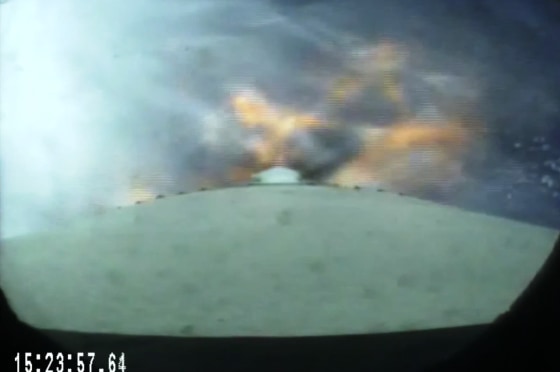A stunning new video shows the first stage of SpaceX's Falcon 9 rocket making a soft ocean splashdown as planned after its launch earlier this month.
The spectacular new SpaceX video, which the company released on Tuesday, shows the rocket stage returning to Earth in a controlled fashion after helping launch six commercial satellites from Florida on July 14. Many key moments are plainly visible, including the deployment of the stage's landing legs and its submersion in the Atlantic Ocean.
Sign up for Science news delivered to your inbox
Even though the booster didn't survive the landing intact, SpaceX considers the reusability test a success. [The Rockets and Spaceships of SpaceX (Photos)]
"This test confirms that the Falcon 9 booster is able consistently to re-enter from space at hypersonic velocity, restart main engines twice, deploy landing legs and touch down at near zero velocity," SpaceX representatives wrote in an update today about the video, which was recorded by the stage's onboard camera.
"After landing, the vehicle tipped sideways as planned to its final water safing state in a nearly horizontal position," they said. "The water impact caused loss of hull integrity, but we received all the necessary data to achieve a successful landing on a future flight."
SpaceX aims to blaze new trail for rocket technology
Developing fully and rapidly reusable rockets is a key priority for California-based SpaceX and Elon Musk, the company's billionaire founder and CEO. Musk has said reusable launch systems could slash the cost of spaceflight by a factor of 100, potentially making Mars colonies and other lofty goals economically feasible.
SpaceX has now attempted three first-stage returns during Falcon 9 launches. The company plans another first-stage ocean splashdown in September, and the two Falcon 9 launches after that will feature attempts to bring the first stage down to Earth softly on land.
— Mike Wall, Space.com
This is a condensed version of a report from Space.com. Read the full report. Follow Mike Wall on Twitter and Google+. Follow Space.com on Twitter, Facebook or Google+.
